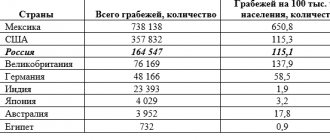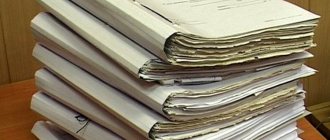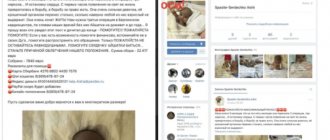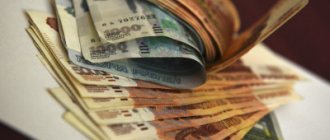Definition of the concept
In simple words, “money laundering” is its legalization. People create fictitious documents, organizations and businesses to appear as official income. But there are other ways. Unlike cashing, laundering is associated with illegal income-generating activities. In this case, as a rule, we are talking about large sums that are difficult to bring into legal channels without a plausible explanation to the regulatory authorities. In addition, cashing is the withdrawal of non-cash money into cash, and laundering often involves the opposite: cash is deposited into bank accounts for legalization, after which it can be cashed out legally.
In this case, funds are converted from cash to non-cash form (for example, using an instant payment terminal), and in the opposite direction (fictitious receipt of a prize on a lottery ticket or the purchase of a winning ticket from the rightful owner, the cost of which may be greater than the winning itself).
The essence of money laundering is concealing the real source of income. And evading tax payments or cashing out may serve as secondary or auxiliary factors. “Laundered” funds are used for various purposes - company financing, personal needs.
The need to launder money or other material assets may arise under the following circumstances:
- If monetary earnings are obtained as a result of illegal activities, be free to use it for any purpose. This could be trade in prohibited items, bribes, kickbacks.
- If an organization hides an illegal source of income that violates the law, it avoids paying money to the state in the form of tax deductions. The money is “laundered”, reflecting a different nature of earnings, after which it is invested in the business.
Practical conclusions
As we can see, cybercriminals have built a complex and multi-stage money laundering scheme. In the process, they change accounts, companies, presentation, currency, jurisdiction many times. And all this takes a matter of days. During this time, some companies do not even notice that they have been attacked.
Therefore, it makes the most sense for banks to take matters into their own hands and build a cybersecurity system in such a way as to minimize the possibility of hacking financial systems and gaining control over them. We have a special product aimed specifically at banks and other financial institutions: the Kaspersky Fraud Prevention platform. It allows you not only to provide behavioral analysis of users and control of transactions and financial transactions, but also to monitor attempts to launder stolen money through your bank. You can find out more about it on the solution website.
Basic stages of money laundering
Money laundering is carried out in three stages:
- Peeling. Initially, money obtained illegally is “diverted” from its real source. For this purpose, funds are withdrawn abroad, transferred to the accounts of individuals or legal entities.
- Accommodation. Funds are introduced into the legal cash flow by any available means. As a rule, at this stage the attacker already has fictitious confirmation of the source of their income.
- Integration. This is the final stage when the appearance of legitimate possession of wealth is created. The owner of funds can freely withdraw them, transfer them to any accounts, and purchase various items and real estate.
After passing through three main stages, the money is reinvested in illegal activities. The process can be repeated an unlimited number of times or carried out once, to legalize a large amount and spend it further, for example, a bribe.
Sometimes some steps are skipped. For example, if the money is immediately deposited into a bank account, its implementation is no longer required. But this is a risky step, since the bank will definitely inquire about the origin of the income and without documentary evidence the account may be frozen. Also, integration is not always carried out, that is, the “laundered” money remains in different accounts and is used as needed. In some cases, the situation requires you to wait a certain period of time before proceeding to the third stage. But concealing the true source of funds and obfuscating the tracks is mandatory.
Are you struggling with cashing out?
Yes. From the current ones. On March 10, 2021, Sergei Pivovarov, one of the largest “cashers,” was detained. He headed a group that was engaged in cashing out money in the Orenburg, Samara and Saratov regions. Money was “laundered” through thousands of bank payment terminals throughout the country. Several billion rubles went into the “shadow”. And at the end of 2015, banker Alexander Grigoriev was arrested. He was a co-owner of several banking structures. He was engaged in cashing money and withdrawing it abroad according to the so-called “Moldavian scheme”.
Examples of money laundering schemes
Criminals are usually well versed in all matters related to money laundering. Therefore, when one scheme is exposed, a new one is immediately developed. Here are the most famous ones:
- Through offshore companies. Even very large sums can be laundered in this way. Through intermediaries in tax haven countries, offshore accounts are opened where money is transferred. They are then transferred to bank accounts in third countries. There they can be stored, invested in real estate, securities or other objects. The use of offshore companies is a well-known method of money laundering, since state currency control of these organizations is simply absent. Plus, account holders are guaranteed anonymity.
- Via bitcoins. Bitcoin or other cryptocurrency wallets are not considered official means of payment in most countries and are anonymous. Therefore, they can be easily used to withdraw funds to any country, including those where cryptocurrency can be used in the same way as regular money - to pay for goods. Currency from the wallet is transferred to a bank account and converted into dollars, euros, etc. The primary source of income is no longer known.
- Through an individual entrepreneur or organization. A very simple and relatively reliable scheme is running a fictitious business. Intermediaries open cafes, bars, a network of payment terminals, retail stores, etc. Regardless of the flow of real cash received from customers, illegal money is introduced into the business. It is almost impossible to track and calculate them, and if taxes are paid on time and documentation is maintained, neither the bank through which the funds are circulated nor other regulatory authorities will be suspicious.
- Through capital structuring. Example: a large amount of money is divided into small shares that will not arouse suspicion from the tax authorities. They are then transferred through bank cards to intermediaries, after which they withdraw them and transfer them to the original owner, but in cash minus commissions. For example, an amount of 10,000 rubles received on an individual’s account/card does not raise suspicion. Moreover, in each bank you can open a card account and have 10, 20 or 30 of them.
The described schemes are widely known and are currently little used in this form. To launder income, criminals invest a lot of money and involve intermediaries. Proven methods are modified and adapted to modern capabilities. For example, today there are already cases of money laundering through electronic wallet accounts QIWI , WebMoney , Yandex . Money .
Risks
Risks are divided into categories (high risk, increased, moderate, low).
| Type of risk | Risk |
| High risk | Use of nominee legal entities (“fly-by-night”) |
| Use of fictitious foreign economic activity | |
| Use of foreign legal entities and trusts | |
| Using cash | |
| Use of electronic money | |
| Using virtual currency (such as bitcoins) | |
| Participation of individuals affiliated with officials | |
| Increased risk | Use of banks, MFOs and CCPs |
| Using the market for precious metals and precious stones | |
| Using money transfer systems | |
| Use of the securities market | |
| Use of cash moved across the border of the EAEU | |
| Moderate risk | Use of the insurance sector |
| Use of real estate | |
| Using Russian Post services | |
| Use of notary services | |
| Use of the leasing sector | |
| Use of mobile operator services | |
| Using payment acceptance operators | |
| Low risk | Use of mutual funds, non-state pension funds, auditors, lawyers, lawyers, accountants |
| Use of informal money transfer systems (such as Hawala) |
Let us dwell in more detail on some types of risk and tell you how the state intends to combat these factors.
Responsibility and methods of disclosure
For the fight against money laundering in the country to be highly effective, it is important that the following authorities interact with each other:
- Legislative.
- Executive power and ministries.
- Judicial.
- Law enforcement agencies.
- Financial intelligence (all its divisions).
- Control and supervisory bodies, headed by the Central Bank.
The banking sector is the most vulnerable, as it is the main instrument for moving money to offshore accounts, cryptocurrency wallets, and electronic money. Therefore, banks must know their customers, conduct their business honestly and transparently, and correctly identify financial risks. There are also cases where the management of financial institutions consisted of criminals actively laundering money. For this reason, the interaction of various authorities is very important, as it allows for stricter control over the work of banks.
On the territory of the Russian Federation, since August 7, 2001, Law No. 115-FZ “On combating the legalization of proceeds from crime and the financing of terrorism” has been in force. It allows banks to “freeze” accounts and conduct investigations into the origin of funds.
Formally, financial institutions check cash receipts in amounts exceeding 600 thousand rubles, as well as real estate transactions whose amount exceeds 3 million rubles. Employees of a banking institution are required to notify the Federal Service for Financial Monitoring (Rosfinmonitoring) about this. In addition, the law states that banks are strictly prohibited from opening bearer accounts, making transfers of more than 30 thousand rubles, as well as conducting currency exchange operations in the amount of 15 thousand rubles or more. without the client providing a valid passport.
In practice, banks pay closer attention - suspicion is caused by regular receipts of smaller, identical amounts (for example, receipt of payment for informal rental housing), one-time cash receipts and/or transfers exceeding normal limits. For example, if a salary in the amount of 30 thousand rubles is regularly received into an individual’s account, after which a transfer of 300 thousand rubles is suddenly credited. When withdrawing it to another account, the bank may require confirmation of the source of income, and, moreover, with documents.
Not only banking institutions track the movement of money. There are also a number of organizations that are required to report customer transactions to regulatory authorities. For example, insurance, investment companies, as well as companies that buy and sell products made of gold and other precious metals. This list includes real estate agencies and many other organizations and institutions through which transactions for large sums are carried out.
At the global level, money laundering is controlled by the Financial Action Task Force (FATF), created back in 1989. Currently it includes 35 member states and two international companies. Russia became a member in 2003.
Shell companies
The use of nominee legal entities is a very common method of laundering criminal proceeds, notes Rosfinmonitoring.
The state is implementing a set of measures to eliminate nominal legal entities: mechanisms have been introduced to prevent the registration of such companies and the use of front individuals for this.
In addition, a mechanism has been introduced to include legal entities in a unified blacklist of banking clients who are denied transactions and the opening of a current account.
Thus, in 2021, banks made 620 thousand decisions to refuse to carry out operations, which made it possible to stop the withdrawal of more than 181 billion rubles into the shadow sector, RFA boasts.
The Federal Tax Service of Russia is working to verify the authenticity of the Unified State Register of Legal Entities. Another measure is the ASK VAT-2 system, which allows you to identify actions aimed at minimizing VAT payable to shell companies and fictitious invoices.
How do tax authorities detect cashing?
Even if the entrepreneurs behaved very carefully and were sure that they had thought through everything, the tax authorities have several indirect signs by which they can distinguish a fictitious transaction from a real one.
What signs are we talking about? For example,
- workers can afford large purchases with low wages, for example, premium cars;
- the company claims significant amounts of taxes for reimbursement;
- the founder or director is among the company's counterparties;
- the company opens a bank account in which many legal entities from the controlled list “sit”;
- the company's operations attract attention due to their unusual nature: the company traded concrete and suddenly bought a carload of tulips;
- the company’s balance sheet contains many transactions for which it is difficult to determine the market value, for example, consulting services;
- source documents.
Definition
When laundering, the true source of income is concealed,[2] real transactions are replaced with formal ones, the economic meaning is distorted, while at the initial stage of money laundering documents can be forged, documents of third parties can be used, for the final legalization of funds the rules of the laws on a bona fide purchaser and many others are used.
It is often stated that this term appeared in the United States in the 1920s, when the American mafia began to buy and open laundromats en masse to launder cash obtained by criminal means. In a wide network of small establishments with low prices, machines and a large number of customers, it is very difficult to control revenue, which allows large amounts of illegally obtained cash to be added to real revenue[3].
However, American author Jeffrey Robinson points out that this is not so. He says the term "money laundering" was first used by the British newspaper The Guardian
during the Watergate scandal in connection with the illegal financing of the election campaign of Richard Nixon.
In the context of globalization, offshores are often used for money laundering - tax haven countries, whose banking systems ensure anonymity and confidentiality.
Literature
- Pierre-Laurent Chatin, John McDowell, Cedric Mousset, Paul Allan Schott, Emile van der Does de Villebois.
Prevention of money laundering and terrorist financing. Practical Guide for Bank Supervisors = Preventing Money Laundering and Terrorist Financing: A Practical Guide for Bank Supervisors. - M.: "Alpina Publisher", 2011. - 316 p. — (World Bank Library). — ISBN 978-5-9614-1466-0. - Edited by Edgardo Campos, Sanjay Pradhan.
The many faces of corruption. Identifying vulnerabilities at the level of economic sectors and government = The Many Faces of Corruption: Tracking Vulnerabilities at the Sector Level. - M.: "Alpina Publisher", 2010. - 552 p. — ISBN 978-5-9614-1062-4. - Reuter, Peter.
. - Peterson, 2004. - .
This page was last edited on February 6, 2019 at 07:49 pm.









